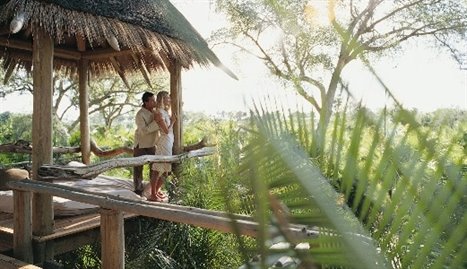The Battle of St. George's Caye was a short military engagement, came as a result of the outbreak of war between Britain and Spain in 1796, lasted from 3 September to 10, 1798, fought off the coast of what is now Belize. However, the name is typically reserved for the final battle that occurred on September 10.
The battle took place between an invading force from Mexico, attempting to claim Belize for Spain, and a small force of resident woodcutters called Baymen , who fought for their livelihood assisted by black slaves. After the final two and a half hour battle, ravaged by sickness, the Spaniards withdrew and the British declared themselves winners.
Background
The territory that is now Belize was under dispute from as early as the mid 1750s by Great Britain and Spain. While Spain never occupied Belize, she apparently considered it part of her Central American territories, such as Mexico and Guatemala. The British had entered the territory as of 1638 to harvest logwood and later mahogany. Spain recognized this trade in the Treaty of Paris (signed in 1763) but did not undertake to draw boundaries (which would have suggested that Spain was giving up claims of sovereignty to the area), leading to further disputes. Indeed, from 1779 to 1782 the settlement was practically non-existent, its settlers having been deported to Havana, Cuba.
The Treaty of Versailles and the Superintendency
In 1783, hostilities were brought to an end by the signing of the treaty of Versailles, which allowed the Baymen rights between the Belize and Hondo rivers; this was extended with the 1786 Convention of London to the Sibun River. Cutting rights were granted to the settlers on the condition that the settlement be recognized as belonging to Spain; Superintendent Col. Marcus Despard was to administer the terms of the treaty. Due to conflicts with the inhabitants Despard resigned, but by 1796 it was clear the issue would have to be settled.
Escalation and preparations
Humphreys relates that in a 1796 visit to the area, Visitador Juan O'Sullivan claimed the British were encroaching on Spanish territory in Mexico by cutting near the Rio Hondo. Upon his return to Spain, hostilities broke out between Great Britain and Spain as a result of the Napoleonic Wars. The Spanish viewed the situation seriously and determined to take out the British.
Colonists appealed to Jamaica Lieutenant Governor Alexander Lindsay, Sixth Earl of Balcarres, for assistance. Even though he was in the midst of the Maroon Wars, Balcarres nonetheless sent muskets and ammunition to the settlement and a further shipment arrived on Lt. Thomas Dundas' ship HMS Merlin in December 1796. But upon his arrival, Dundas noted panic in the settlement and the subsequent dispatching of slaves to cut logwood instead of preparing to defend the settlement.
Balcarres then named Major (promoted to Lt. Colonel) Thomas Barrow Superintendent of the settlement. Barrow, a seasoned veteran of war according to Humphreys, immediately began whipping the unruly Baymen into shape, and martial law, stopping all activities in the settlement, was declared on February 11, 1797. On March 18, magistrates Thomas Potts, Thomas Graham and Marshall Bennett all asked Barrow whether there were any incoming messages from Jamaica. Barrow admitted that more help would be on the way soon, to alleviate the fears of the Baymen, but Humphreys calls the actions of Potts and company "cowardly" and says that even after that reassurance morale was low.
The June evacuation meeting
Impatient with the plans to defend the settlement, the Baymen called a public meeting for 1 June 1797. At this meeting, the Baymen voted 65 to 51 to defend the settlement and cooperate with Barrow. This initial support wavered considerably between then and September 1798, as reports came in of the size of the Spanish arrived just north of St George's Caye in early September 1798, all secured by Don Arturo O'Neill Tirone, Yucatán Governor and Commander of the expedition, had secured: reportedly consisted of 32 vessels, including sixteen heavily armed men-of-war and 2000 troops broken down below.
“ ...two very large frigates, an armed brig, and two sloops carrying two 100 pounders, and four gunboats carrying each a 24 pounder in bow; with several other armed vessels, arrived... at Campeche, and taking aboard about 300 troops, then sailed and (made a rendezvous) at the island of Cozumel;...the two frigates and the brig left the fleet there and as the deserters understood, returned to La Vera Cruz... A schooner of 22 guns, to which they (the deserters) belonged, then became commodore...All the small vessels of the fleet were to be sent to Bacalar to assist in embarking the troops at that place, said to consist of 12 companies of 100 men each... ”
This estimate was severely reduced due to outbreaks of yellow fever and dissent in the Spanish army. Nevertheless, it was enough to frighten the Baymen into posting lookouts near the boundaries of the territory.
Baymen's preparations
The Merlin's command in 1798 was Captain John Moss, a strategist on the order of Barrow. By July 18, 1798 the fleet had reached Cozumel, leading the settlers to agree to arm their slaves, an act that affected the outcome of the battle due to the slaves' knowledge of warfare. There were still some who were cautious and demanded evacuation, including Potts, but Balcarres ignored them and imposed martial law on July 26. The Settlement lineup consisted of the following:
“ Merlin, HM's sloop of war; two sloops, Towser and Tickler, with one 18 pounder and 25 men each; one sloop, Mermaid, with one short 9 pounder and 25 men; the schooners, Swinger and Teazer, with six four pounders and 25 men each; seven gun-flats, one 9 pounder and 16 men each. ”
In addition there were 700 troops ready to deter attack by land.
The Battle
From September 3 to 5, the Spaniards tried to force their way through Montego Caye shoal, blocked by the defenders and shallow waters. The military commanders, Moss and Barrow, differed on where to put their resources for the next phase of the fight: Barrow thought they would go to the land phase, while Moss decided on defending St. George's Caye. Moss arrived in time to stop the Spaniards, setting the stage for September 10.
September 10
On the morning of September 10, 1798, fourteen of the largest Spanish ships sailed to within 2.5km of St George's Caye, keeping to the deep water to the east, and began firing. Captain Moss of the Merlin held his fire – the Spanish broadsides were falling short. At 1:00 pm that afternoon, the Spaniards and British lined up off St. George's Caye. The Spaniards stormed through the channel, and at 1:30 Captain Moss gave the order to open fire. Guns blazing, the Merlin and the Baymen's fleet swept forward, wreaking havoc among the heavy and crowded Spanish ships. The Spaniards engaged the British in a two-hour fight which ended in defeat for the confused Spaniards who were already weakened by desertions and yellow fever. They suffered heavy losses and fled in disorder to Caye Chapel. There they remained for five days, burying their dead on the island. Moss reported no one killed and the side in good spirits. Barrow was dispatched and arrived in time to see the end of the battle and prevent the slave men from boarding the enemy. The Spaniards were in full retreat by September 13, and Barrow agreed to send vessels to further push the Spaniards back. On the morning of September 16 the defeated fleet sailed for Bacalar.
Aftermath
Though a victory was won against overwhelming odds, the Battle of St George's Caye was not by itself decisive. No one in Belize could be sure that the Spanish would not once again attempt to remove the Baymen by force. The legal status was as before: a settlement where the inhabitants could cut timber but which did not constitute a territory of the British empire. Sovereign rights remained, nominally at least, with Spain.
However, in purely practical terms the power of the Spanish empire was waning while the British empire was consolidating and expanding. But in Belize the slaves were still slaves, though they had fought valiantly alongside the Baymen: their owners expected them to go back to cutting mahogany. Emancipation came no earlier than elsewhere in the British empire. Indeed controversy still exists within Belize over the fact that the battle was fought between two European powers to establish rule over a colony. It created the conditions for Belize to become an integral part of the British empire and enabled the slave owners to claim that the slaves were willing to fight on behalf of their masters. Whatever its legacy, the 1798 expedition was the last time that Spain attempted to gain control over Belize; Britain gradually assumed a greater role in the government of the settlement
The event is celebrated every September 10 in Belize as St. George's Caye Day or National Day.


































